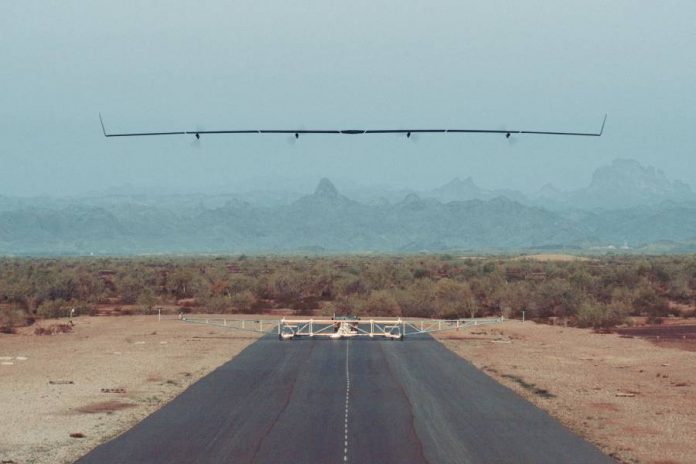
On December 16, the National Transportation Safety Board issued a report revealing the alleged causes behind Facebook’s Aquila drone crash during an attempted landing at an undisclosed location in the Arizona desert.
High winds affected the unmanned aircraft, causing its autopiloting system to get confused and head in the wrong direction, which ultimately resulted in its demise, though the company initially covered up the crash.
Facebook’s V-shaped aircraft is part of a project that aims to bring Internet service to off-the-grid areas. This endeavor includes doing research into drone usage to provide WiFi. The robot has the wingspan of a Boeing 737.
Aquila sustained substantial damage, according to the NTSB

The Aquila drone took off from the Yuma Proving Ground’s Site 8 runway at approximately seven a.m., local time.
The flight had a 90-minute schedule the aircraft oversaw without any anomalies, but at about 7:37, it encountered wind speeds close to 18 knots, and everything went south.
At that moment, the drone was already in the process of attempting landing maneuvers at its original destination. An unexpected gust prompted the aircraft’s autopilot system to lower the nose of the drone, causing it to go down head-first with speed close to 25 knots.
The report only indicates the crash caused the autonomous airplane to receive ‘substantial’ damage, but it does not specify exactly where or how, and Facebook did not clarify this matter in their later press release.
Facebook already found a solution for Aquila’s wind problem

The company’s official statement said that they will now incorporate “a drag device such as a spoiler or airbrake” on their drones for the autopilot to attempt a landing without further increasing the drone’s airspeed.
Developers also plan to reprogram the autopilot to prioritize the airspeed limit, even if this means sacrificing altitude tracking. They admit this measure could result in less precise landing, but the drone’s risk of damage would be significantly lower.
Facebook developers Yael Maguire and Martin Luis Gomez added they were already working on the second generation of solar-powered drones with this event leaving nothing but room for improvement.
https://www.youtube.com/watch?v=eOez_Hk80TI
Facebook’s Aquila drone completed its first flight on June 28 of this year. The company wants these machines to be a long-term, cost-effective Internet solution for some isolated communities around the world.
The UAV can fly at altitudes between 60,000 and 90,000 feet, weighs less than 1,000 pounds and can stay on the air with only 5,000 watts of solar power, the equivalent (as Facebook puts it) of three hair dryers.
In its final stage, the Aquila will be able to stay up to 90 days in the sky providing underserved regions with Internet service.
Source: Facebook










